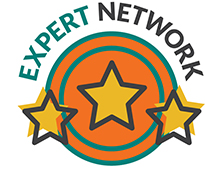5 Operational Priorities For Pharma Companies In The Wake Of COVID-19
By James Morris, executive director, Pharmaceutical Services, NSF International
COVID-19 is doing more than changing the way we do business — it’s pulling the curtains back on pharmaceutical sourcing strategies and revealing their complexities.
Consider the example of Gilead’s ramp-up of remdesivir manufacture under FDA Emergency Use Authorization. Behind the scenes, Gilead is managing the production of an active pharmaceutical ingredient (API) in Canada, sourcing key starting materials from across the globe, and finishing the injectable product at a facility in La Verne, CA. The enormity of the task when the product is early in its life cycle is substantial. Also consider the efforts of so many companies racing to bring vaccines and therapeutics for COVID-19 through clinical development, demonstrating safety and efficacy at speeds rarely seen in the past.
As these organizations source starting materials, active ingredients, excipients, and other components, they will face pressure to reduce timelines and find ways to accelerate development, testing, and launch. And they will do so while regulatory agencies across the globe have had to scale back their inspection oversight capacity due to COVID-19. This does not mean regulatory and GMP compliance is not expected; on the contrary, it’s incumbent on all companies to tighten internal oversight. And doing so requires creativity to unleash new ways of managing suppliers, scaling up production, accelerating regulatory review cycles, and managing changes. The analogy of changing a tire while driving the vehicle is well known — now picture doing so at 7,000 rpm!
The following issues will undoubtedly take on additional meaning and warrant leadership’s attention.
1. Product Supply Shortages
Finished product supply shortages in the pharmaceutical sector were already an issue and a significant source of concern for regulatory agencies. U.S. companies like Civica Rx and the Phlow Corporation have stepped in to fill the void. And regulatory warning letters continue to require notice to the FDA of a potential supply disruption. COVID-19 has only exacerbated the situation.
This is the time to sharpen the focus on supplier risk assessment and supply chain strategy. Companies need to go beyond concerns over which components are single-sourced and which suppliers have had a poor quality record, to also focus on the logistics of shipment and possible trade barriers that might preclude shipment from a country. This requires a careful review of supplier risk across the entire supply chain. As indicated above, regulatory bodies are sensitive to drug shortages and will work with manufacturers to facilitate the registration and approval of alternate sources.
Review your supply chain from end to end to identify suppliers/locations at risk and work diligently to identify alternatives.
2. Supplier Oversight
The routine on-site supplier audit may become a thing of the past. Forward-thinking companies will look to substitute the on-site audit with data that provides confidence in their suppliers’ systems and performance. However, data about a supplier’s performance cannot be downloaded or purchased. The data must be relevant to the supplier and the customer’s relationship with that supplier. For instance, suppose your company is purchasing valsartan from a supplier in China. The data you require should be relevant to that API: batches manufactured, batches rejected, deviations, change controls issued, and, importantly, how they are testing for nitrosamine impurities upstream in the production process. The data must be granular enough to establish confidence in the source of supply and/or raise concerns that warrant further evaluation.
Moving toward a more proactive, data-centric approach to managing supply chain risk is a welcome change. There will always be circumstances that warrant an on-site audit, but COVID-19 is demonstrating that supplier oversight can be accomplished remotely as long as the right questions are asked and the relationship with the supplier is built around transparency.
Transition to a supplier oversight model focused on the data that offers assurance of GMP and regulatory compliance.
3. Personnel Impact
The virus is an invisible foe, as is the unseen stress on people in the workplace. I have heard the term “COVID-19 vacation” used to describe working from home. But for managers on the front line, leading unit operations where people are concerned about their well-being and that of their families, there is no rest. They are managing higher levels of absenteeism, onboarding new employees virtually, and triaging issues to keep production schedules on track.
Every crisis breeds opportunity. If there’s a silver lining, it will lie with those employees who “stepped forward” for their colleagues and found creative ways to get things done. Or it may lie in the cross-training of employees for new or expanded roles. Key decisions around product quality may be delegated closer to the unit operation, which should result in efficiency gains. However, employee knowledge gaps will become more apparent when a key subject matter expert (SME) is not available.
Knowledge and skill shortfalls should be tracked, as this will inform training curricula. If someone has stepped into a new and/or interim role, additional checkpoints or huddles will be warranted. One of the greatest mistakes managers can make is to assume that an employee in a new or expanded role “gets it”or will raise their concerns when unsure. Keeping communications lines open will avoid surprises.
Recognize and appreciate the additional efforts of your colleagues, checking in more frequently with those taking on new roles and assignments.
4. Triage Management
Risk-based decision-making during a time of crisis takes on new meaning. Quality systems (deviations, change controls, laboratory incident reports) are categorized on the basis of risk. The degree of effort required to investigate and document findings is commensurate with the degree of patient safety risk. Under COVID-19, two things will happen: 1) resources will become more scarce, and 2) the number of issues and severity of those issues will increase. Thus, organizations need to triage and focus their efforts on the issues that will make the most significant difference to the organization. And they must do so with excellent understanding of their products, processes, and requlatory requirements. Regulators are apt to work with companies and offer appropriate regulatory relief, but this crisis does not waive regulatory or GMP requirements.
Triage deviations and other incidents by applying risk management techniques to ensure you and your teams focus on those issues that represent the greatest risks to product quality and patient safety.
5. Inspection Readiness
The first inspection post COVID-19 requires special preparation. It’s important to keep in mind that your organization or unit is only as good as its last inspection. Therefore, it’s incumbent on each organization to treat its upcoming regulatory inspection as its first inspection. The list of issues will undoubtedly be unique and include conditional release of components, shipments under quarantine, deviations in transit, and a number of challenges that had to be managed under the stress of fewer people, newer people, and people working at a distance.
Good companies emerge stronger after a crisis, and we can predict that their regulatory inspections post COVID-19 will go well. Other companies will struggle and have difficulty explaining the rationale for the decisions taken during a period of intense pressure.
Start your inspection planning now as opposed to a few months or weeks before an anticipated inspection.
Conclusion
Companies are adjusting to new ways of working under COVID-19. In pharma operations, these adjustments include identifying alternative suppliers, conducting supplier audits remotely, expediting prior approval manufacturing changes, and shifting teams and roles as needed to keep product moving. Furthermore, regulatory agencies are making adjustments to their activities, from application review to compliance oversight. Take stock of these adjustments and determe which changes should be embedded into your operations. Operational efficiency gains in the short term due to handling COVID-19 could represent long-term efficiency gains for individual companies and for the industry.
About the Author:
 James Morris has more than 25 years of pharmaceutical management experience in both plant operations and corporate offices, working with Pfizer, Cilag AG, and Mass Biologics in the U.S. and Europe. He has held positions as deputy director QA/QC and regulatory affairs while at Mass Biologics, director of QA/QC for the Biologics business unit of Cilag AG, and several quality assurance and manufacturing roles with Pfizer, culminating as the head of Quality Assurance for Pfizer in Latina, Italy.
James Morris has more than 25 years of pharmaceutical management experience in both plant operations and corporate offices, working with Pfizer, Cilag AG, and Mass Biologics in the U.S. and Europe. He has held positions as deputy director QA/QC and regulatory affairs while at Mass Biologics, director of QA/QC for the Biologics business unit of Cilag AG, and several quality assurance and manufacturing roles with Pfizer, culminating as the head of Quality Assurance for Pfizer in Latina, Italy.
